
<Ohlédnutí za Dnem architektury v Liberci> <Reflection on the Day of Architecture in Liberec>
Liberec dissolved and abandoned
Twenty-eight enthusiasts from Liberec and beyond, that was an unexpected number of experts and amateurs who gathered on October 2, 2011, at the bunker on Lucemburská Street for a walk through the “Liberec Beirut”. They came together to celebrate Architecture Day and to express their concern for the fate of a specific part of Liberec.
In the crumbling and semi-abandoned neighborhood between the Nisa Palace, St. Antonín, and the court—an area that some condemn while others love for its unique original character—members of the civic association “The Rest”: Ruda Hulka, the chairman of the association and a local native, Jiří Žid, the vice-chairman and architect, and Jiří Janďourek, an architect and assistant at the local faculty of architecture and art, guided the walk.
First, at the Nisa Palace, the guides talked about the settlement of the mentioned part of Liberec and the establishment of the first manufactories around the local arm of the Nisa River. However, the later construction of the railway completely changed the city’s urbanism, relocating the industry and causing this craft center to gradually fall into oblivion. While other neighborhoods flourished, the houses here deteriorated, many were demolished, leaving behind only the preserved “rest” of the old buildings. “Every Liberec leadership viewed this area as a burden we must be ashamed of, and therefore it had to be demolished,” recalls Ruda Hulka of the unfortunate past.
The guides' explanations gradually transitioned into an open discussion, where the past was exchanged for the present and certain concerns about the future. Is the real solution to demolish old houses and replace them with new developments out of scale? Or should we build houses of the same scale among the “rest” and preserve the unique character? “The specific character of the area is not its downfall, but its opportunity,” concludes the discussion, which could be titled “What to do with it”, Jiří Janďourek.
The walk continues across Papírák to the city terraces, which are now only partially urban. Sold off to several owners, they are now fenced, with steps demolished, in short, rendered impassable. Liberec doesn’t have walls like other cities that could be revitalized into parks, but it does have these southern terraces on a terrain break above Lucemburská street. Several winding stone stairs lead to them, the old Liberec spreads out below, and in the distance, Ještěd rises. Here, just a few steps from Pražská, we realize how close we are to the absolute center and how long people have been calling for a park right in the city. A place where happenings, exhibitions, and shows took place, is, however, another squandered opportunity for Liberec.
After a stop at St. Antonín and a discussion about the “Rest”’s fight to create a market in the space in front of the church and a relaxation zone on the terraces, we continue along the break towards the neoclassical house with the promised doormat from the Municipal House. Standing near the doormat, we observe a virtual design of the restored terraces complete with a café using Brunelleschi's perspective device (handcrafted by Jiří Žid). How tempting it is to imagine sitting here sipping coffee, how difficult it is to make it happen.
Instead, we go to see Ruda's magical garden with the antique head, although it is not yet complete, the view is much more positive. Around the flat house, we then head to the Na Ladech neighborhood. Unlike the previous neighborhood, it has the fortune that the city permitted repairs to the roads and sidewalks, and surprisingly quite well.
The walk through the dissolved and abandoned Liberec peaks at the God-forgotten Church of Mary Magdalene. The interiors of the monastic sanctuary for Capuchins, which along with its cloak has been deteriorating for years, could only be seen by a few contemporaries, likely only during such rare occasions. Maxi Kühne, how long have we waited for your dilapidated church to reopen to the public?!
The walk comes to an end, with applause from the participants and a closing word. Ruda Hulka speaks on behalf of everyone and sums up the entire walk with a cautionary yet apt quote: “For bad things to arise, it suffices for good things to remain silent.”
More information >
In the crumbling and semi-abandoned neighborhood between the Nisa Palace, St. Antonín, and the court—an area that some condemn while others love for its unique original character—members of the civic association “The Rest”: Ruda Hulka, the chairman of the association and a local native, Jiří Žid, the vice-chairman and architect, and Jiří Janďourek, an architect and assistant at the local faculty of architecture and art, guided the walk.
First, at the Nisa Palace, the guides talked about the settlement of the mentioned part of Liberec and the establishment of the first manufactories around the local arm of the Nisa River. However, the later construction of the railway completely changed the city’s urbanism, relocating the industry and causing this craft center to gradually fall into oblivion. While other neighborhoods flourished, the houses here deteriorated, many were demolished, leaving behind only the preserved “rest” of the old buildings. “Every Liberec leadership viewed this area as a burden we must be ashamed of, and therefore it had to be demolished,” recalls Ruda Hulka of the unfortunate past.
The guides' explanations gradually transitioned into an open discussion, where the past was exchanged for the present and certain concerns about the future. Is the real solution to demolish old houses and replace them with new developments out of scale? Or should we build houses of the same scale among the “rest” and preserve the unique character? “The specific character of the area is not its downfall, but its opportunity,” concludes the discussion, which could be titled “What to do with it”, Jiří Janďourek.
The walk continues across Papírák to the city terraces, which are now only partially urban. Sold off to several owners, they are now fenced, with steps demolished, in short, rendered impassable. Liberec doesn’t have walls like other cities that could be revitalized into parks, but it does have these southern terraces on a terrain break above Lucemburská street. Several winding stone stairs lead to them, the old Liberec spreads out below, and in the distance, Ještěd rises. Here, just a few steps from Pražská, we realize how close we are to the absolute center and how long people have been calling for a park right in the city. A place where happenings, exhibitions, and shows took place, is, however, another squandered opportunity for Liberec.
After a stop at St. Antonín and a discussion about the “Rest”’s fight to create a market in the space in front of the church and a relaxation zone on the terraces, we continue along the break towards the neoclassical house with the promised doormat from the Municipal House. Standing near the doormat, we observe a virtual design of the restored terraces complete with a café using Brunelleschi's perspective device (handcrafted by Jiří Žid). How tempting it is to imagine sitting here sipping coffee, how difficult it is to make it happen.
Instead, we go to see Ruda's magical garden with the antique head, although it is not yet complete, the view is much more positive. Around the flat house, we then head to the Na Ladech neighborhood. Unlike the previous neighborhood, it has the fortune that the city permitted repairs to the roads and sidewalks, and surprisingly quite well.
The walk through the dissolved and abandoned Liberec peaks at the God-forgotten Church of Mary Magdalene. The interiors of the monastic sanctuary for Capuchins, which along with its cloak has been deteriorating for years, could only be seen by a few contemporaries, likely only during such rare occasions. Maxi Kühne, how long have we waited for your dilapidated church to reopen to the public?!
The walk comes to an end, with applause from the participants and a closing word. Ruda Hulka speaks on behalf of everyone and sums up the entire walk with a cautionary yet apt quote: “For bad things to arise, it suffices for good things to remain silent.”
More information >
The English translation is powered by AI tool. Switch to Czech to view the original text source.
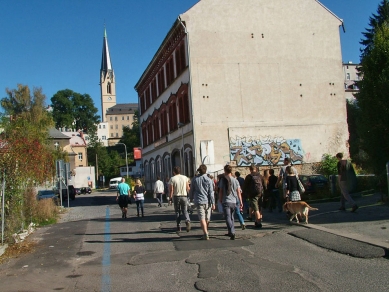
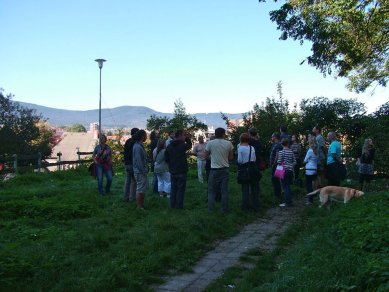
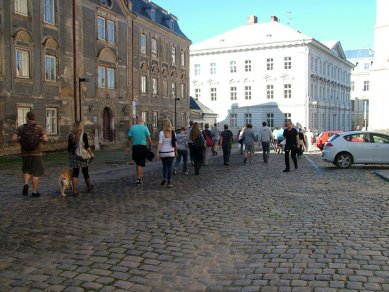
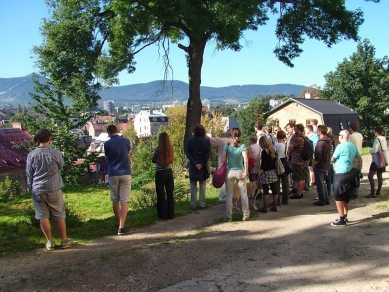
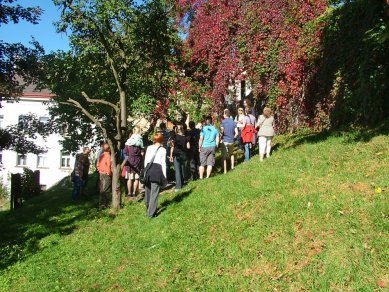
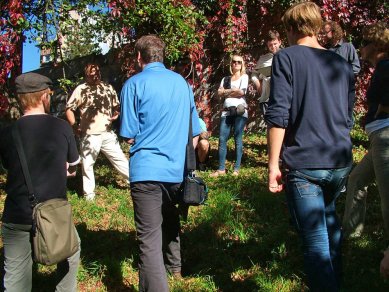
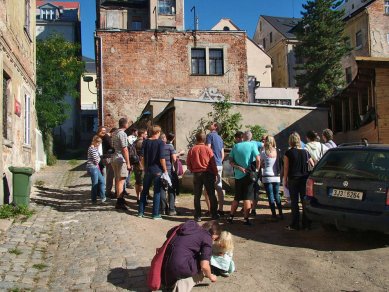
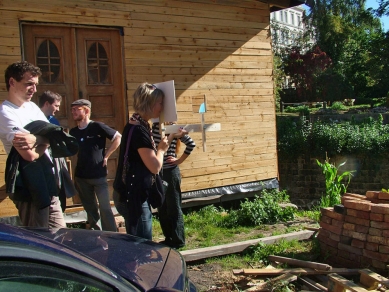
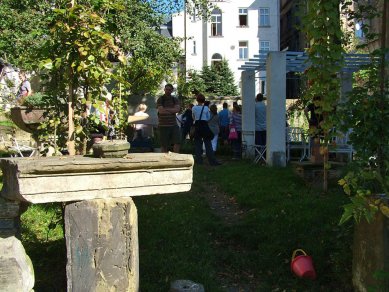
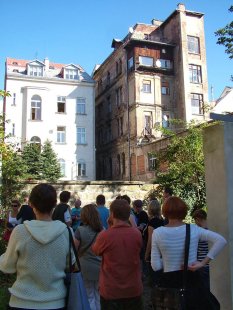

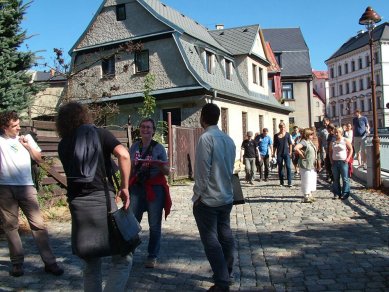

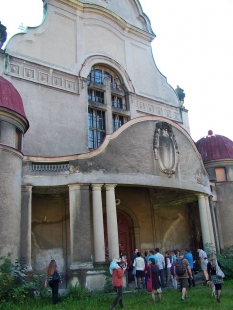
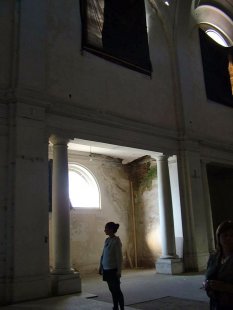

0 comments
add comment
Related articles
0
05.12.2023 | Public presentation of the land use study Papírák
0
15.10.2013 | <html>
<head>
<title>Looking Back at Architecture Day in Jablonec</title>
</head>
<body>
<h1>Looking Back at Architecture Day in Jablonec</h1>
</body>
</html>
5
09.10.2011 | <translation>Reflection on Architecture Day in Brno</translation>
0
30.09.2011 | The architecture - program Liberec












